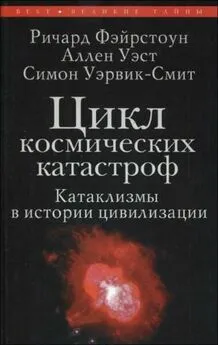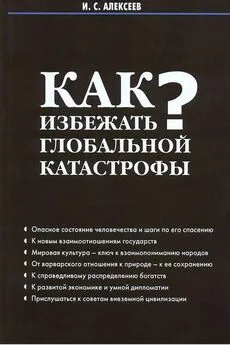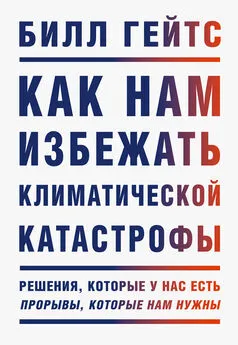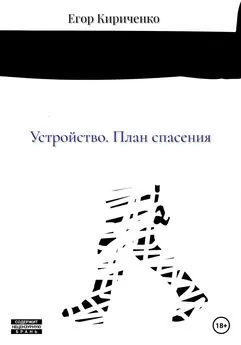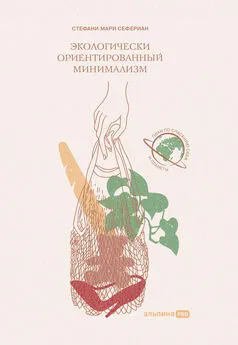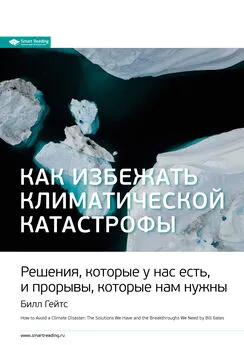Лестер Браун - Как избежать климатических катастроф?: План Б 4.0: спасение цивилизации
- Название:Как избежать климатических катастроф?: План Б 4.0: спасение цивилизации
- Автор:
- Жанр:
- Издательство:Эксмо
- Год:2010
- Город:Москва
- ISBN:978-5-699-39482-1
- Рейтинг:
- Избранное:Добавить в избранное
-
Отзывы:
-
Ваша оценка:
Лестер Браун - Как избежать климатических катастроф?: План Б 4.0: спасение цивилизации краткое содержание
В этой книге Лестер Браун утверждает, что не мировой терроризм, не ядерное или химическое оружие, а именно голод, наступающий в том числе из-за изменения климата, — главная угроза для мира. Угроза вполне реальная: прекращен экспорт зерна из России, мировые цены на пшеницу выросли в два раза. Если и другие крупные экспортеры понесут сравнимые потери из-за природных катаклизмов, всемирный продовольственный кризис будет неизбежен.
У Лестера Брауна, лауреата премии ООН в области охраны окружающей среды, есть план по спасению человечества от гибели. Его суть — снижение потребления (продуктов питания и энергоресурсов), восстановление земельных, водных и биоресурсов Земли, переход на новую, экологически безопасную экономическую модель жизни, глобальная структурная реформа госуправления. Идеи Брауна, изложенные в этой книге, могли бы показаться утопическими — если бы богатейшие люди Америки (вроде Билла Гейтса или Уоррена Баффета), раньше других заметившие угрозу, не вкладывали бы в их реализацию миллиарды.
Для широкого круга читателей.
Как избежать климатических катастроф?: План Б 4.0: спасение цивилизации - читать онлайн бесплатно полную версию (весь текст целиком)
Интервал:
Закладка:
Giles Tremlett, “Climate Change Lays Waste to Spain’s Glaciers”, Guardian (London), 23 February 2009.
234
Anne Minard, “No More Glaciers in Glacier National Park by 2020?” National Geographic News , 2 February 2009.
235
Michael Kiparsky and Peter Gleick, Climate Change and California Water Resources: A Survey and Summary of the Literature (Oakland, CA: Pacific Institute, 2003); Timothy Cavagnaro et al., Climate Change: Challenges and Solutions for California Agricultural Landscapes (Sacramento, CA: California Climate Change Center, 2006).
236
Michael J. Scott et al., “Climate Change and Adaptation in Irrigated Agriculture — A Case Study of the Yakima River” — в книге: UCOWR/ NIWR Conference, Water Allocation: Economics and the Environment (Carbondale, IL: Universities Council on Water Resources, 2004); Pacific Northwest National Laboratory, “Global Warming to Squeeze Western Montains Dry by 2050”, press release (Richland, WA: 16 February 2004).
237
John E. Sheeby, International Rice Research Institute, сообщение по электронной почте, посланное Джанет Ларсен из Earth Policy Institute 1 октября 2002 г.; Pedro Sanchez, “The Climate Change-Soil Fertility-Food Security Nexus”, выступление на конференции “Устойчивая продовольственная безопасность для всех к 2020 г.”, Бонн, Германия 4–6 сентября 2002 г.
238
K. S. Kavi Kumar and Jyoti Parikh, “Socio-Economic Impacts of Climate Change on Indian Agriculture”, International Review for Environmental Strategies , vol. 2, No. 2 (2001), pp. 277–293; U. N. Population Division, op. cit. note 59.
239
Mohan К. Wali et al., “Assessing Terrestrial Ecosystem Sustainability”, Nature & Resources , October-December 1999, pp. 21–33.
240
Shaоbing Peng et al., “Rice Yields Decline with Higher Night Temperature from Global Warming”, Proceedings of the National Academy of Sciences , “Warmer Evening Temperatures Lower Rice Yields”, press release (Washington, DC: 29 June 2004).
241
Sheehy, op. cit. note 65; Sanchez, op. cit. note 65.
242
Tim P. Barnett et al., “Human-Induced Changes in the Hydrology of the Western United States”, Science , vol. 319 (22 February 2008); T. M. Shanahan et al., “Atlantic Forcing of Persistent Drought in West Africa”, Scienc e, vol. 324 (17 April 2009); Marshall B. Burke, David B. Lobell, and Luigi Guarino, “Shifts in African Crop Climates by 2050, and the Implications for Crop Improvement and Genetic Resources Conservation”, Global Environmental Change , в печати.
243
U. N. Population Division, op. cit. note 59; Burke, Lobell, and Guarino, op. cit. note 70; Marlowe Hood, “Warming May Outstrip Africa’s Ability to Feed Itself: Study”, Agence France-Presse , 17 June 2009.
244
IEA, op. cit. note 6, pp. 221, 225; DOE, EIA, “How Dependent Are We on Foreign Oil?” — см.: tonto.eia.doe.gov/energy_in_brief/foreign_oil_dependence.cfm, материал обновлен 23 апреля 2009 г.; U. S. Bureau of the Census, “Most of Us Still Drive to Work Alone — Public Transportation Commuters Concentrated in a Handful of Large Cities”, press release (Washington DC: 13 June 2007); Peter Whorinskey, “GM to Build Small Car in U. S.”, Washington Post , 29 May 2009.
245
Ayesha Rascoe, “U. S. Oil Demand in 2008 Hit a 10-year Low: Government”, Reuters , 7 July 2009; DOE, EIA, Short-Term Energy Outlook (Washington DC: 27 February 2009), pp. 22; Ayesha Rascoe, “U. S. Public Transit 2008 Ridership Highest in 52 years”, Reuters, 9 March 2009.
246
Campbell, op. cit. note 5; Michael T. Klare, “Entering the Tough Oil Era”, TomDispatch.com , 16 August 2007.
247
Michael T. Klare, “The Energy Crunch to Come”, TomDispatch.com , 22 March 2005; Jad Mouawad, “Big Oil’s Burden of Too Much Cash”, New York Times , 12 February 2005; Mark Williams, “The End of Oil?”, Technology Review , February 2005; John Vidal, “The End of Oil Is Closer Than You Think”, Guardian (London), 21 April 2005.
248
James Pincero, “If We Really Have the Oil”, Bloomberg Wealth Manager , September 2002, p. 45; Klare, op. cit. note 75; Richard C. Duncan and Walter Youngquist, “Encircling the Peak of World Oil Production”, National Resources Research , vol. 12, No. 4 (December 2003), p. 222; Walter Youngquist, GeoDestinies: The Inevitable Control of Earth Resources over Nations and Individuals (Portland: National Book Company, 1997); A. M. Samsam Bakhtiari, “World Oil Production Capacity Model Suggests Output Peak by 2006–07”, Oil and Gas Journal , 26 April 2004, pp. 18–20.
249
Fredrick Robelius, Giant Oil Fields — The Highway to Oil (Uppsala, Sweden: Uppsala University Press, 9 March 2007), pp. 81–84; Petrobras Brazil, “Production Goes on Stream in Tupi: Year I of a New Era” — см.: www2.petrobras.com.br/Petrobras/ingles/area_tupi.asp, просмотрено 17 июня 2009 г.
250
Guy Chazan and Neil King Jr., “Russian Oil Slump Stirs Supply Jitters”, Wall Street Journal , 15 April 2008; данные о снижении добычи нефти в России см. в: IEA, Oil Market Report (Paris: May 2009).
251
Vidal, op. cit. note 75.
252
Gargi Chakrabarry, “Shale’s New Hope”, Rocky Mountain News , 18 October 2004; Walter Youngquist, “Alterantive Energy Sources” — в книге: Lee C. Gerhard, Patrick Leahy, and Victor Yannacone, eds., Sustainability of Energy and Water through the 21st Century , Proceedings of the Arbor Day Farm Conference, 8–11 October 2000 (Lawrence, KS: Kansas Geological Survey, 2002), p. 65.
253
Rober Collier, “Canadian Oil Sands: Vast Reserves Second to Saudi Arabia Will Keep America Moving, But at a Steep Environmental Cost”, San Francisco Chronicle , 22 May 2005; Alberta Department of Energy, Alberta’s Oil Sands, 2008 (Edmonton, Alberta: June 2009); BP, BP Statistical Review of World Energy 2009 (London: June 2009) p. 11; Robin Pagnamenta, “Canadian Oil-Sand Mines Stuck as Crude Price Plummets”, The Times (London), 5 January 2009; Jad Mouawad, “Big Oil Projects Out in Jeopardy by Fall in Prices”, New York Times , 16 December 2008.
254
Sheila McNulty, “Tar Sands Refinery Projects Face a Sticky Future”, Financial Times , 5 January 2009; Collier, op. cit note 81; Alfred J. Cavallo, “Oil: Caveat Empty”, Bulletin of the Atomic Scientists , vol. 61, No. 3 (May/ June 2005), pp. 16–18; Richard Heinberg, “The End of the Oil Age”, Earth Island Journal , vol. 18, No. 3 (fall 2003).
255
IEA, op. cit. note, p. 507.
256
World Health Organization, “Air Pollution”, Fact Sheet 187 (Geneva: revised September 2000); Janet Larsen, “Coal Takes Heavy Human Toll: Some 25,100 U. S. Deaths from Coal Use Largely Preventable”, Eco-Economy Update (Washington DC: Earth Policy Institute, 24 August 2004).
257
U. S. Environmental Protection Agency, Office of Science and Technology, “National Listing of Fish Advisories: 2005–06 National Listing”, fact sheet (Washington, DC: July 2007).
258
Jonathan Watts, “Beijing Blames Pollutants for Rise in Killer Cancers”, Guardian (London), 22 May 2007.
259
Barbara Demick, “China Blames Pollution for Surge in Birth Defects”, Los Angeles Times , 2 February 2009; Steven Mufson, “Asian Nations Could Outspace U. S. in Developing Clean Energy”, Washington Post , 16 July 2009.
260
Keith Bradsher, “Green Power Takes Root in the Chinese Desert”, New York Times , 2 July 2009.
261
IEA, op. cit. note 6, p. 507.
262
Paul Hawken, Commencement Address to the Class of 2009, University of Portland, Portland, OR, 3 May 2009.
263
Global Wind Energy Council, Global Wind 2008 Report (Brussels, 2009), pp. 3, 56; Erik Shuster, Tracking New Coal-Fired Power Plants (Pittsburgh, PA: U. S. Department of Energy (DOE), National Energy Technology Laboratory, January 2009); “Nuclear Dips in 2008”, World Nuclear News , 29 May 2009; один мегаватт установленной мощности, генерирующей энергию с помощью ветра, вырабатывает достаточно электроэнергии для снабжения 300 домов — см.: American Wind Energy Association “U. S. Wind Energy Installations Reach New Milestone” (Washington, DC, 14 August 2006), press release; число домов вычислено на основе данных о среднем размере домашнего хозяйства в США, полученных из публикации: U. S. Census Bureau “2005–2007 American Community Survey 3-Year Estimates — Data Profile Highlights” — см.: factfinder.census.gov/servlet/ACSSAFFFacts (просмотрено 9 апреля 2009 г.) и данным о населении из электронной базы данных того же Бюро State and Country QuickFacts, обновленной 20 февраля 2009 г. — см.: quickfacts.census.gov.
264
Поведение двуокиси углерода смоделировано на основе данных о продуктах горения ископаемых видов топлива, приведенных в работе: Tom Boden, Gregg Marland, “Global CO2 Emissions from Fossil-Fuel Burning, Cement Manufacture, and Gas Flaring: 1751 — 06” и “Preliminary 2006–2007 Global and National Estimates by Extrapolation”, обе работы опубликованы в сборнике: Carbon Dioxide Information and Analysis Center (CDIAC), Fossil Fuel CO2 Emissions (Oak Ridge, TN: Oak Ridge National Laboratory (ORNL), 2009), а также на основе данных об изменении выбросов в зависимости от изменения характера землепользования, приведенных в статье R. A. Houghton, “Carbon Flux to the Atmosphere from Land-Use Changes” — см.: CDIAC, Trends: A Compendium of Data on Global change (Oak Ridge, TN: ORNL, 2008), ниспадающая кривая приведена в J. Hansen и др., “Dangerous Human-Made Interference with Climate: A GISS ModelE Study”, Atmospheric Chemistry and Physics , vol. 7 (2007), pp. 2, 287–312; данные о текущей концентрации СО2 в атмосфере взяты из статьи: Pieter Tans, “Trends in Atmospheric Carbon Dioxide — Mauna Loa”, National Oceanic and Atmospheric Administration, Earth System Research Laboratory, — см.: www.esrl.noaa.gov/gmd/ccgg/trends просмотрена автором 7 апреля 2009.
Читать дальшеИнтервал:
Закладка:



